Five years are up! It’s time for a more ambitious Canadian Contribution to COP26.
 Guest blog by Xia (Alice) Zhu.
Guest blog by Xia (Alice) Zhu.
In this blog, I detail why it is important for Canada to step up and tackle climate change and I ask our government to commit to these 6 actions so that we can submit a more ambitious Nationally Determined Contribution (NDC) to COP26:
- Stop introducing new subsidies for fossil fuel companies
- Do not extend the lifespan of current subsidies
- Be transparent about the amount of money spent on subsidies each year
- Invest in renewables
- Work together with provinces and territories to develop and implement an ambitious federal carbon tax across the country
- Fully support the transition of workers from the fossil fuel industry to clean energy sector jobs
Please read on for the full blog.
See ways to get involved at the end.
Canada’s emissions reduction targets: where we are, where we need to be, and how to get there
Where we are
Canada’s “Net-Zero Emissions Plan”: Bill C-12
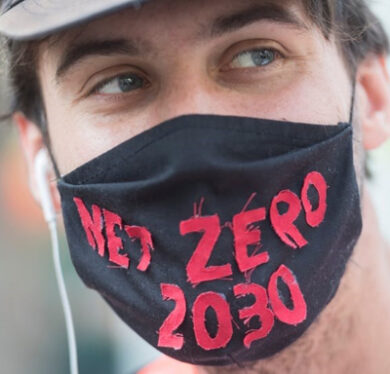
Photo by Graham Hughes/Canadian Press
I felt hopeful as I read through Canada’s newest climate plan released in December of 2020 The plan laid out how the Government of Canada would theoretically meet a target they claim to be “more ambitious” than their current target of 30% below 2005 levels by 2030, instead aiming for a predicted 32-40% reduction. The plan mentioned striking a “Net-Zero Advisory Body” to achieve net-zero emissions by 2050, working with local organizations and Indigenous communities to mitigate and adapt to climate change, cooperating with provinces to achieve reductions beyond those of federal policies, planting two billion trees, raising the federal carbon tax, investing in clean energy, and more. This was all music to my ears at first, but the more I thought about it, the more I realized that there were serious flaws in the plan.
First, although the plan mentions that the federal government will foster cooperation with provinces and territories to fulfill its goals, this is easier said than done. I wish the plan outlined in more detail how the federal government will actually get provinces and territories on board with its pollution pricing scheme, taking into consideration the different economic, ethical, political dimensions of each province or territory and the hardships they are facing at this moment. Secondly, although the plan includes a timeline for specific actions to be accomplished – for example raising the federal carbon tax to $170 a tonne by 2030, creating a Net-Zero Advisory Body in 2020-2021, or planning long-term infrastructure starting in 2021 – there are no penalties for not meeting these deadlines.
This makes it difficult to hold the government accountable to its timeline in the first place. To add to this problem, several of the milestones mentioned in the plan exceed this government’s period in office, meaning that it could in theory not act on climate change and yet still be abiding by the plan. Thus, I must take this plan with a grain of salt.
“To add to this problem, several of the milestones mentioned in the plan exceed this government’s period in office, meaning that it could in theory not act on climate change and yet still be abiding by the plan.”
I also find some of the statistics in the plan hard to believe: for instance, the plan states that in December of 2019, it was predicted that Canada’s GHG emissions in 2030 would be 227 megatonnes lower than had been projected for 2030 before the Pan-Canadian Framework, making it sound as if we are on track to meeting our target. Other sources, however, calculated in December 2019 that Canada is set to miss its current target by roughly 35%.
At the end of the day, a plan is still a plan, and whether it is successful or not really depends on the government’s commitment to act on its promises.
 And now I get to the final glaring problem I found in the plan. It does not shine a spotlight on the problem of fossil fuel subsidies and how to lift ourselves out of a carbon-intensive society. In my opinion, this should be a central focus of the plan. We know big oil is being bailed out during COVID with no strings attached and this runs contrary to all of the actions the plan is suggesting we take. Ignoring this problem threatens to leave Canada behind on the global front in tackling climate change.
And now I get to the final glaring problem I found in the plan. It does not shine a spotlight on the problem of fossil fuel subsidies and how to lift ourselves out of a carbon-intensive society. In my opinion, this should be a central focus of the plan. We know big oil is being bailed out during COVID with no strings attached and this runs contrary to all of the actions the plan is suggesting we take. Ignoring this problem threatens to leave Canada behind on the global front in tackling climate change.
Where we need to be
Canada is a heavy emitter and more needs to be done to meet (and surpass) its Paris Climate Summit targets.
Brief history from Paris Climate Summit to now
In 2015, over 200 countries submitted their nationally determined contributions (NDCs) or their emissions reduction pledges to the twenty-first installment of the Conference of the Parties (“COP21” or the Paris Climate Summit). However, the aggregate of these NDCs does not limit global average temperature rise to 2oC above pre-industrial levels.
This is because, firstly, NDCs depend on the current ability of each country to allocate funds to tackling climate change, in the context of other social, economic, and political circumstances within the country itself. Countries that are struggling with other issues may have difficulty contributing higher emission reductions to the agreement, such as countries being ravaged by war or those struggling with poverty. Secondly, these were voluntary contributions submitted by countries heading into the Paris Climate Summit. They were not made more ambitious by the United Nations Framework Convention on Climate Change in order to achieve a successful agreement.
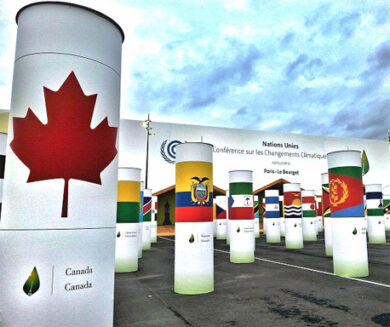 As with other international agreements, participation in the Paris Agreement is voluntary and the UNFCCC cannot force governments to sign on. Thus, it was important for the President of COP21 to accept each country’s NDC as presented in order to prevent countries from backing out, which had happened at the fifteenth installment of the Conference of the Parties (COP15) in Copenhagen. Shamefully, six countries including the US drafted an agreement by themselves – infamously known as the Danish text – in back-door meetings at COP15 without consulting the rest of the participating countries, creating animosity and resulting in a very weak deal. So it is no surprise that going into COP21, countries were still skeptical about whether a deal could be reached. Although the Paris Agreement is lacking in ambition, having a binding agreement as a result is a real achievement.
As with other international agreements, participation in the Paris Agreement is voluntary and the UNFCCC cannot force governments to sign on. Thus, it was important for the President of COP21 to accept each country’s NDC as presented in order to prevent countries from backing out, which had happened at the fifteenth installment of the Conference of the Parties (COP15) in Copenhagen. Shamefully, six countries including the US drafted an agreement by themselves – infamously known as the Danish text – in back-door meetings at COP15 without consulting the rest of the participating countries, creating animosity and resulting in a very weak deal. So it is no surprise that going into COP21, countries were still skeptical about whether a deal could be reached. Although the Paris Agreement is lacking in ambition, having a binding agreement as a result is a real achievement.
Nationally Determined Contributions
You might wonder then, what will we do about these dreadfully low NDCs? The answer lies in a mechanism described in the Paris Agreement as the ratchet mechanism. This mechanism essentially involves countries submitting new NDCs every 5 years, each one more ambitious than the previous, until we achieve the 1.5oC target – that means 2020, 2025, 2030, and so on. But the responsibility for ratcheting up these emission reduction targets falls on the shoulders of countries themselves.
Canada: emission reduction target, responsibilities, commitments
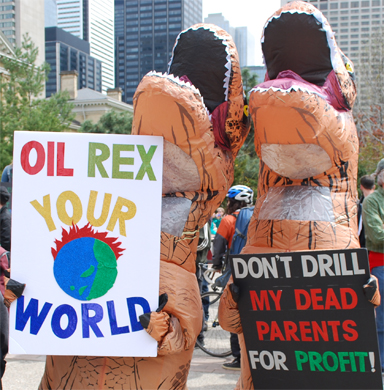 Have we been meeting the goals of the Paris Agreement thus far? Unfortunately not. Instead, several countries – including Canada – prepared multi-million dollar packages to bail out big oil. Some of this money came from taxpayers; some from stimulus funding for economic recovery from COVID-19. But no bailout is big enough for an industry already in permanent decline even before the pandemic started (e.g. one and two). The more money we pour into big oil now, the more of it will become stranded assets, meaning that it will not benefit our society in the future in any way. At this time, the government should be funding industries that will usher in a new era of prosperity and sustainability after the pandemic: specifically, the clean energy industry. If we had just taken a tiny fraction of the love we are pouring into big oil and poured it into clean energy instead, who knows just how much carbon we could have already kept in the ground!
Have we been meeting the goals of the Paris Agreement thus far? Unfortunately not. Instead, several countries – including Canada – prepared multi-million dollar packages to bail out big oil. Some of this money came from taxpayers; some from stimulus funding for economic recovery from COVID-19. But no bailout is big enough for an industry already in permanent decline even before the pandemic started (e.g. one and two). The more money we pour into big oil now, the more of it will become stranded assets, meaning that it will not benefit our society in the future in any way. At this time, the government should be funding industries that will usher in a new era of prosperity and sustainability after the pandemic: specifically, the clean energy industry. If we had just taken a tiny fraction of the love we are pouring into big oil and poured it into clean energy instead, who knows just how much carbon we could have already kept in the ground!
“Instead… Canada – prepared a multi-million dollar package to bail out big oil… But no bailout is big enough for an industry already in permanent decline even before the pandemic started”.
Bailing out big oil
The Paris Agreement also recognizes the importance of providing incentives for emission reduction, including domestic policies and carbon pricing2.
Canada, like many other countries, is heading in the wrong direction. According to the most recent Climate Transparency Report on G20 countries, Canada’s mitigation target is “inefficient”. Instead of providing incentives for emission reduction, we are further incentivizing pollution. For the 2016-2018 period, Canada provided over 10 billion USD of public financing annually for fossil fuel companies. This was second only to China, which provided 24.8 billion USD. The report found that the majority of G20 members are still supporting fossil fuels with public money and subsidies. This, of course, is completely inconsistent with a 1.5oC target as per Paris Agreement objectives.
Also, according to the UN’s 2019 Emissions Gap Report, Canada is on route to exceeding its emission reduction target by 15% or more. The longer Canada delays purging itself of fossil fuels and transitioning to clean energy, the more we will be missing out on reaping the immense rewards of a blooming clean energy industry. The sooner we help oil workers transition to clean energy jobs, the less damage Canada’s economy will sustain and the sooner we will benefit from the expertise and skills of oil & gas sector workers in the renewable energy sector.
“The sooner we help oil workers transition to clean energy jobs, the less damage Canada’s economy will sustain and the sooner we will benefit from the expertise and skills of oil & gas sector workers in the renewable energy sector.”
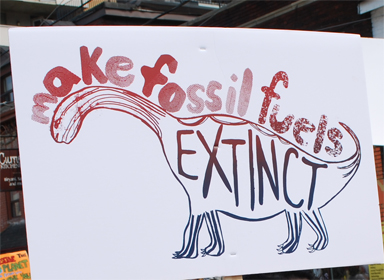 Polluters Pay Principle
Polluters Pay Principle
The idea behind switching subsidies from fossil fuels to renewables is to keep carbon in the ground and to prevent it from making climate change worse. The other action that needs to go hand-in-hand with ending fossil fuel subsidies is making polluters pay. Both of these actions are necessary to disincentivize carbon: the former to prevent further extraction of carbon, and the latter to discourage the use of carbon that has already been extracted.
Despite the myths about how carbon taxes are just governments robbing people of more money, carbon taxes are actually revenue neutral, meaning that the dollars earned from the program go back to taxpayers through other channels. Canada’s Greenhouse Gas Pollution Pricing Act in 2018 enforced carbon pricing across all provinces and territories by December 2019. And in 2020, Canada announced that its new carbon tax will exceed the necessary value stated by Canada’s Parliamentary Budget Officer of $117 per tonne in 2030, so there is hope that we will be able to close the emissions gap through this method. Will it become a reality? That is very difficult to ascertain. We must continue to hold Canada accountable to its promise of implementing this tax.
Summary
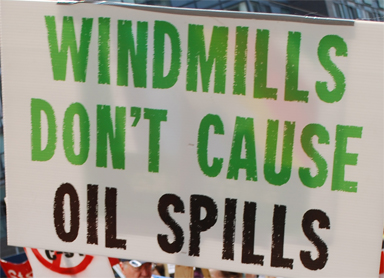 All in all, we missed a big opportunity in the past five years to stimulate the green sector and grow clean jobs, and instead we took a big step backward. Instead of decarbonizing the system, fulfilling our commitments under the Paris Agreement, and moving ourselves towards a clean energy future, the government has bought out fossil fuel companies and poured millions of dollars into a dying industry. By doing this, we are making it harder for us to escape carbon lock-in.
All in all, we missed a big opportunity in the past five years to stimulate the green sector and grow clean jobs, and instead we took a big step backward. Instead of decarbonizing the system, fulfilling our commitments under the Paris Agreement, and moving ourselves towards a clean energy future, the government has bought out fossil fuel companies and poured millions of dollars into a dying industry. By doing this, we are making it harder for us to escape carbon lock-in.
Canada and its importance
Canada is a developed country and its GHG emissions are not insignificant – in fact, in 2017, with only 0.48% of the total world population, Canada accounted for 1.6% of global GHG emissions, making it the ninth most polluting G20 member that year. Because we are a developed nation, and we are contributing heavily to the problem, it is our responsibility to take a leadership position in tackling climate change.
“Canada is a developed country and its GHG emissions are not insignificant – in fact, in 2017, with only 0.48% of the total world population, Canada accounted for 1.6% of global GHG emissions, making it the ninth most polluting G20 member that year”
How to get there
COP26 and a more ambitious NDC
Canada still needs to submit a more ambitious NDC for the twenty-sixth installment of the Conference of the Parties (COP26) in the UK at the end of 2021. But it is clear that without addressing the elephant in the room – the problem of fossil fuel subsidies and the ever-strong influence of big oil on the federal government – achieving a more ambitious NDC or even our current target is going to be very difficult. Fossil fuel subsidies were completely left out of Canada’s latest climate plan. Without addressing them, the plan cannot be achieved.
Call to action
 If our federal government truly cares about the future of Canadians, it will end all subsidies for fossil fuel companies now, or at least impose conditions on subsidized companies. We should be making fossil fuels more expensive, not cheaper. Canada committed to phase out “inefficient” fossil fuels back in 2009, but now the deadline has been pushed to 2025. Time is running out and we need to act now.
If our federal government truly cares about the future of Canadians, it will end all subsidies for fossil fuel companies now, or at least impose conditions on subsidized companies. We should be making fossil fuels more expensive, not cheaper. Canada committed to phase out “inefficient” fossil fuels back in 2009, but now the deadline has been pushed to 2025. Time is running out and we need to act now.
In order to propose a more ambitious NDC for COP26, fulfill our federal climate plan, and be a climate leader on the international stage, I call on the government to commit to these actions immediately:
- Stop introducing new subsidies for fossil fuel companies
- Do not extend the lifespan of current subsidies
- Be transparent about the amount of money spent on subsidies each year
- Invest in renewables
- Work together with provinces and territories to develop and implement an ambitious federal carbon tax across the country
- Fully support the transition of workers from the fossil fuel industry to clean energy sector jobs
All of the actions listed above make polluters pay and are critical to Canada achieving its current emissions reduction target, not to mention its more ambitious one. Many of these actions were left out of Canada’s newest climate plan, but should be ignored no longer. COP26 has been postponed to 2021, but it remains the deadline for countries to submit new NDCs. Canada has not submitted our emission reduction target to COP26 yet. It is absolutely critical that we submit a more ambitious target and take the lead on tackling climate change.
It is more crucial now than ever before for Canada to step up and invest in a sustainable future for all Canadians.
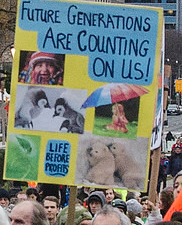 #Get involved!
#Get involved!
If you are interested in taking action, have a look at these campaigns:
- Sign the “Fossil Fuel Non-Proliferation Treaty”: https://fossilfueltreaty.org/
- Support the “For Our Kids” campaign to strengthen Canada’s Net-Zero Emissions Accountability Act or Bill C-12: https://www.forourkids.ca/climate_accountability_act
- Toronto350.org also has a campaign to Strengthen Bill C-12 https://www.toronto350.org/strengthenbillc12 that involves sending a letter to your MP and members of the Standing Committee on Environmental and Sustainable Development
About the author
 Xia (Alice) Zhu
Xia (Alice) Zhu
Alice is a PhD student at the University of Toronto studying the sources, transport, and fate of plastic pollution in the environment. She is also interested in the interconnections between plastic pollution, carbon cycling, and climate change. Alice was a student delegate at the Paris Climate Summit (COP21) from the University of Toronto.
Contact information: alicexia.zhu@mail.utoronto.ca, @AliceXiaZhu